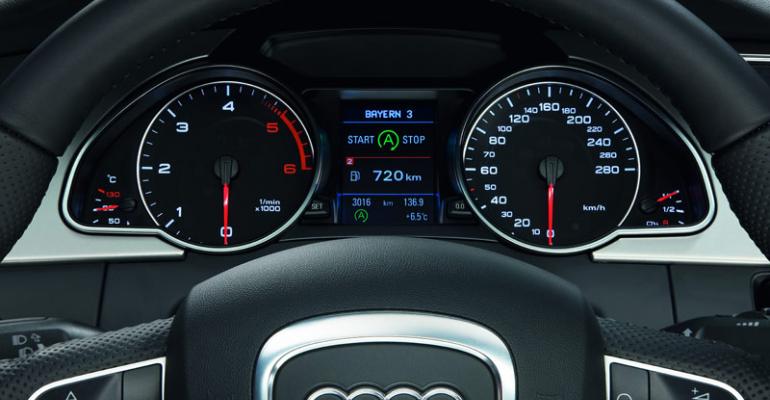NOVI, MI – Widespread acceptance of energy-efficient electric vehicles is a concept most automotive industry insiders agree is far off, but U.S. auto makers racing to meet escalating corporate average fuel economy standards still must find a placeholder in the interim.
Ray Shemanski, Johnson Controls vice president and general manager-global OE, predicts stop/start devices – already seeing healthy penetration in Europe – will be the most influential technology near-term in swaying American drivers toward the idea of vehicles that maximize power but sip fuel.
JCI research shows 75% of consumers are willing to pay up to $230 for a 5% improvement in fuel economy, Shemanski says at The Battery Show here.
The supplier is focusing its efforts on stop/start technology for now and expects electrification to really catch fire in the next two decades, with microhybrids, hybrids, plug-in hybrids and pure EVs all gaining ground in that order.
Shemanski predicts 70% of European drivers will have purchased a vehicle with stop/start technology by 2015 and 40% of American drivers will have followed suit by 2016.
“Vehicle efficiency and energy management are a key focus for our OE customers,” he says.
Increased attention also is being paid to introducing the technology in emerging markets, particularly China. “We're seeing adoption in China that looks like it will follow a pattern established in Europe.”
A survey of early adopters of stop/start in Europe found drivers who purchased a second vehicle with the application did so for environmental reasons, cost-saving potential and to stay ahead of the technology curve.
Microhybrids will fill the gap between start/stop and full hybrids as Americans warm to the technology, he says. Lithium-ion batteries will be part of the equation, particularly as auto makers transition from 12V to 48V electrical systems, but volume application won’t occur for at least another decade.
“We do not see (Li-ion batteries) being in mass-market vehicles in the next 10-15 years,” Shemanski says. “(But) moving from (stop/start to pure-electric), we think lithium-ion will be part of those 48V solutions. We think Li-ion will be a fair contributor to some of these energy efficiencies in the future.”
Other battery-technology producers here are looking at applications beyond automotive to soak up unused Li-ion battery capacity.
“Thankfully, there's a lot of excess demand in the market for grid-scale battery energy storage,” says Glynne Townsend, CEO of Spider9, a Michigan-based advanced control systems supplier.
China again is cited as a market to watch for future battery production.
“I think (China is) moving toward a more integrated approach,” Brittany Gibson, research analyst with Pike Research, says about the market’s vehicle development that is more focused on combining electrification with conventional powertrains.
“I think Europe will go the way Germany goes, and Germany is tossing around a lot of ideas on hydrogen and natural-gas storage.”





